13 Ghost of Tsushima tips and tricks to master the blade
Use our Ghost of Tsushima tips to help you free your island from the Mongol hordes
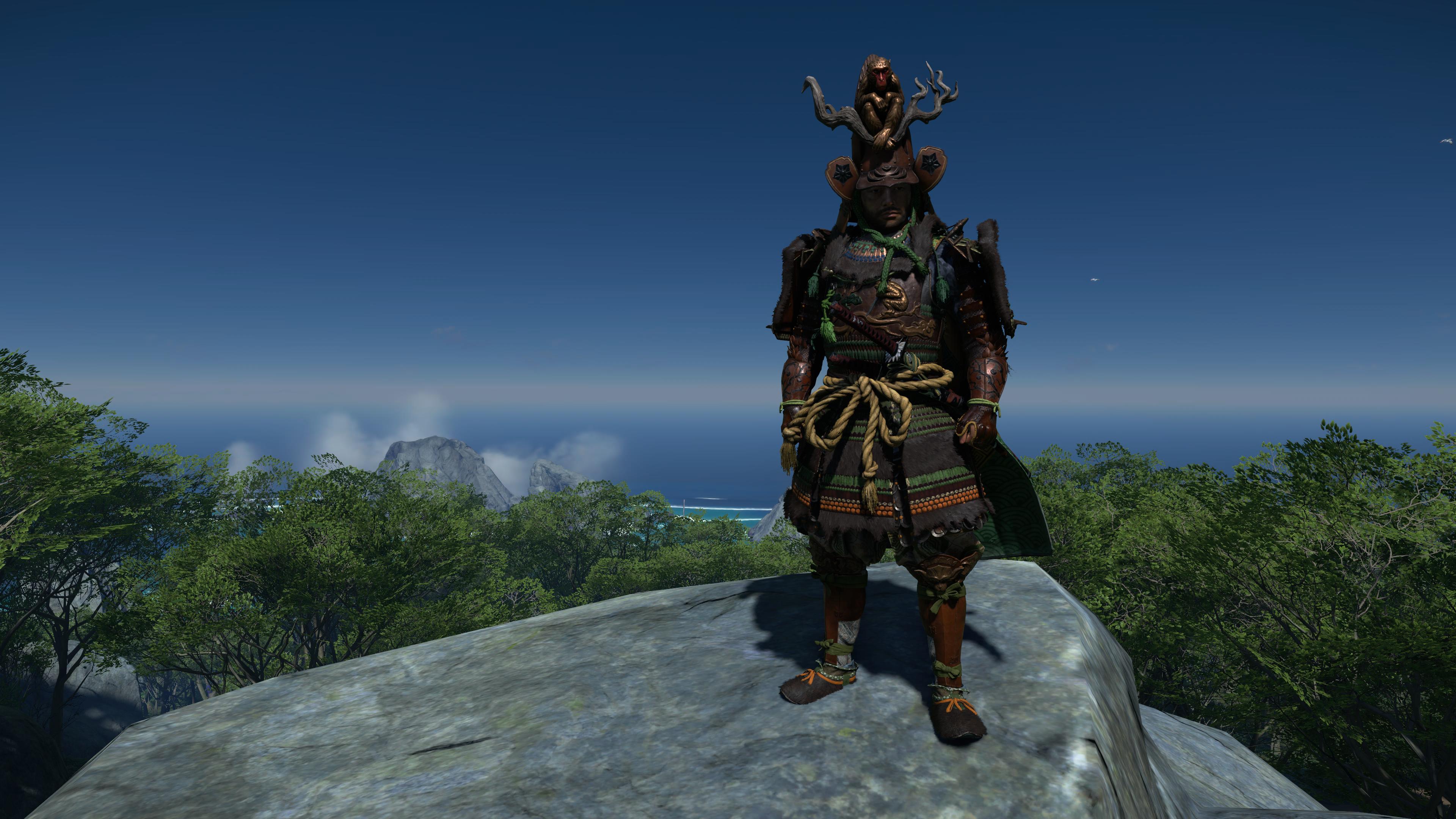
Our Ghost of Tsushima tips and tricks will help players learn how to get to grips with Jin's two kinds of means to fight the Mongolian army - either in direct swordplay, or fighting from stealth by more manipulative - and less traditionally honourable - means. Not only that, but there's all manner of secrets to find across the island of Tsushima - hot springs, shrines, bamboo strikes and more besides. If you're out to be the greatest Ghost of Tsushima possible, our tips and tricks will help point you in the right direction.
1. Hold block while you’re learning parry timings

Parrying is basically the entire point of Ghost of Tsushima. It lets you deflect incoming swords strikes, open up an enemies’ defenses and, with perfect timing, it can stun opponents or allow a single hit kill. Getting the timings down can take a little practice though and it can also take a while to learn the slightly different rhythms of new or unique enemies. Because of that hold block on L1 and release it quickly to then tap L1 for a parry. That way, if you don’t get it quite right you should still get a block and avoid taking damage.
2. Do the first couple of story missions straight away
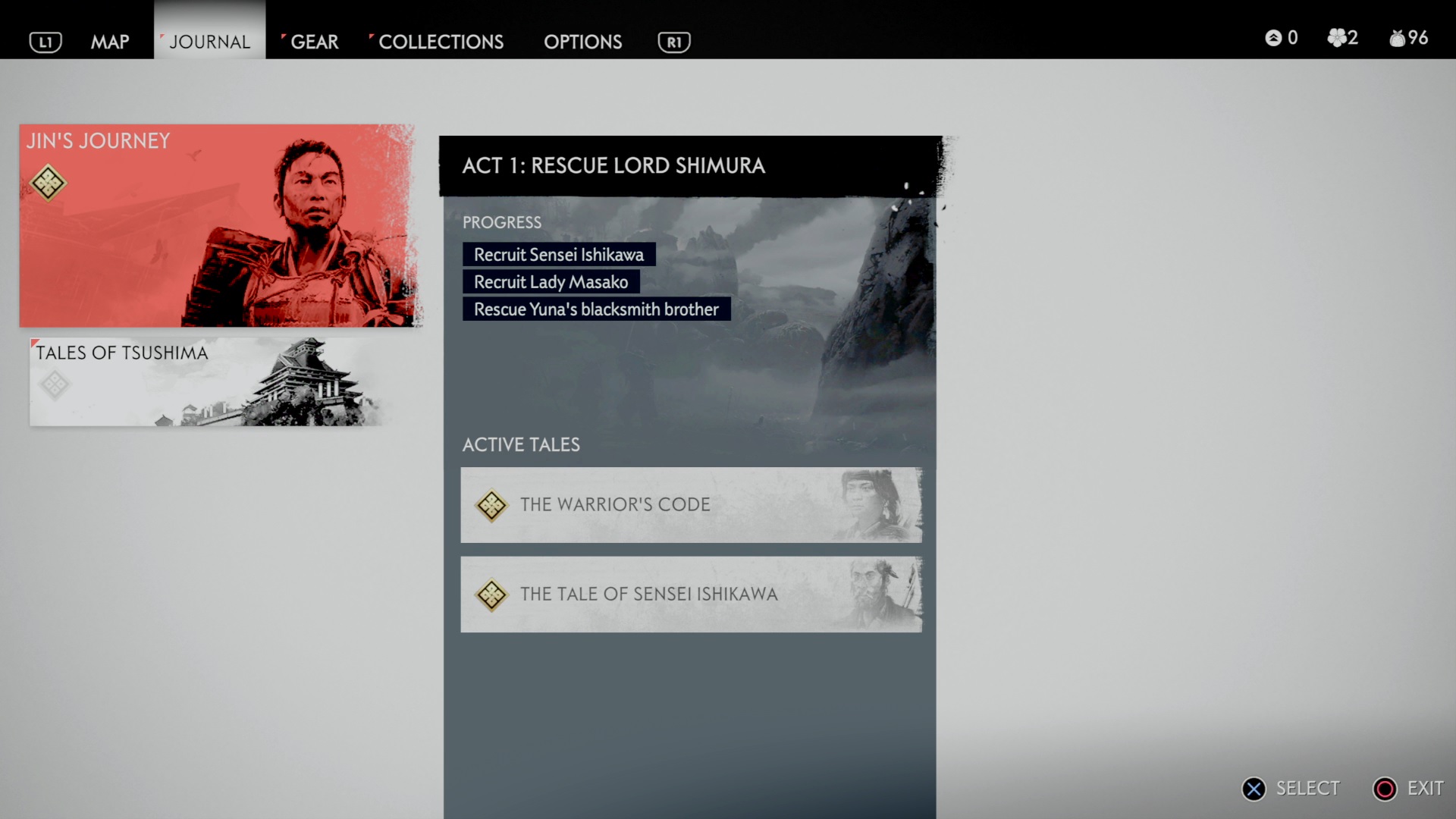
It’s tempting to just rush off into Tsushima’s big open world as soon as the game lets you. However, there are a couple of vital things you need that are locked behind the first two missions. Namely a bow and your enemy-detecting listening sense. Without those you’ll lack a ranged attack option, or the ability to locate enemies out of sight, which makes taking on any camps or bases tricky. So clear those first two missions before you try any hero stuff.
3. Take out the archers first if you can

Even the most basic battles in Tsushima involved balancing multiple threats from all angles. Archers make that extra tricky by firing arrows from the periphery, giving you one more thing to worry about as you deal with parries, stances and positioning. You can dodge the arrows if you listen out for the shouts, and later unlock the ability to block arrows, but why not make life easier by killing all the bowmen first if you can reach them. Some of the bigger fights can see you dealing with six or seven enemies easily, sometimes more, and it’s easy to miss the arrow warnings in all the chaos. Prioritizing archers simply levels the playing field a little in your favor.
4. Don’t forget about the different combat stances and use them to gain an advantage
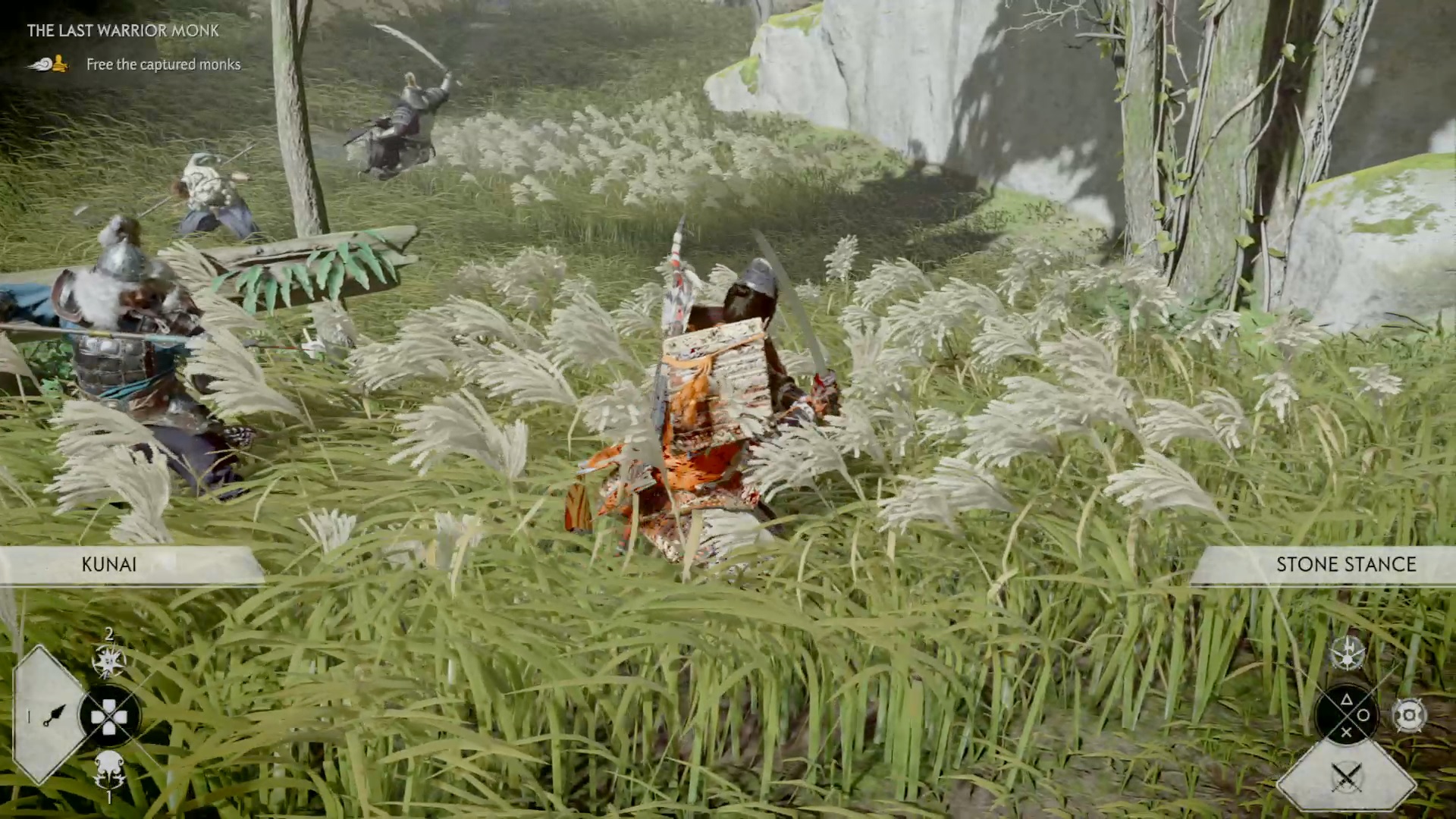
Using stances is a key part of combat in Tsushima so get into the habit of using and switching between them early. The key benefit is using each stance’s heavy attack to break down its corresponding enemies guard - swordsmen, shieldmen, spearmen and brutes. Using the right option can see you destroy an opponent’s block in two or three blows, while using the wrong one will have you hacking away for little gain. You also get a little moment of slow mo as you switch you can use to take stock of the fight and decide what to do next (spoilers: it’s putting the sword’s pointy end in bad people).
5. Use your Kunai throwing knives to regain control if you're being overwhelmed
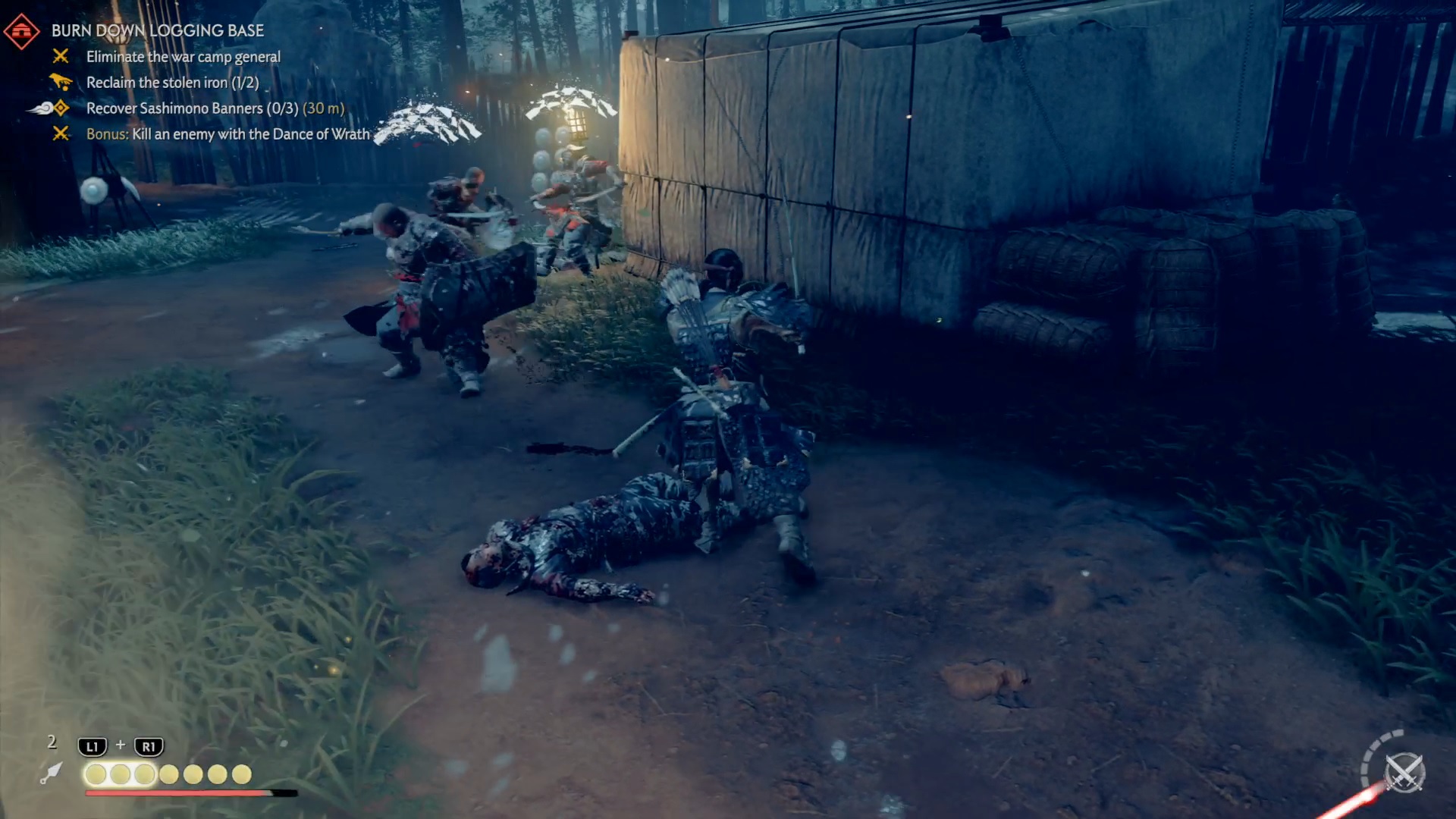
You’ll unlock Kunai early on in the game and these little throwable spikes are extremely useful in a fight. If you have them equipped you can throw one at the nearest enemy with a tap of R1 (and more enemies later as you upgrade the ability). While they won’t usually kill anyone unless they’re at already at low heath, they will always stagger anyone they hit and break their guard. That makes them incredibly useful for a crowd control option, as they’ll clear some space and open up enemies to an easy follow up kill.
6. Always remember to check bodies for ammo and supplies
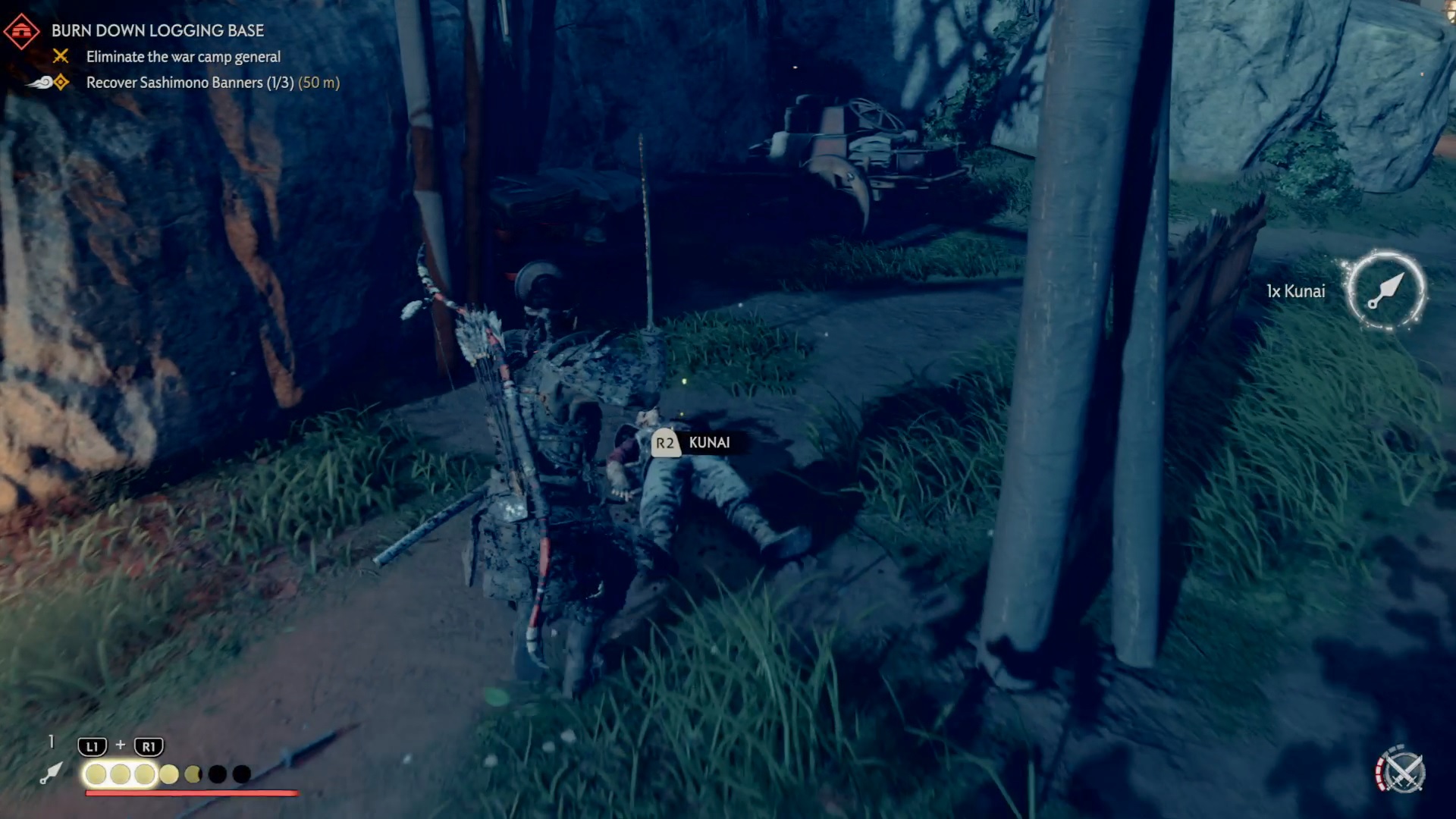
As Tsushima progresses you’ll end up with a wealth of consumables and ammo types to top up - arrows, throwing knives, bombs and so on. Defeated enemies will often have something you can pick up and remembering to search bodies after a fight can easily keep you stocked up. You can buy most of what you need in various bases and camps, but that’s not much help in the middle of an enemy outpost or a multistep mission. It’s easy to forget to look around when you’re following an ally or story mission. So try to avoid rushing off without a quick look around or you’ll soon find yourself running low on vitally useful options.
7. Stand-offs are powerful, but the Ghost Meter is better

At the start of the game you’re a noble samurai who faces his opponents head on, which is where standoffs come in. They let you challenge enemies to one-on-one, quickest sword wins battles. They look amazingly cool when you pull them off, but blow all pretense of stealth by announcing you to everyone in earshot. As the game progresses you’ll unlock a Ghost meter you can charge up and unleash for one hit kills that terrorize the enemy into submission. It can only be charged by stacking kills without taking any damage though, which is almost impossible in open combat. Once you have the ability use stealth kills to charge this power up and then unleash it for most effect.
8. Avoid hammering dodge, as rolling usually leaves you too far away to attack

There’s a very handy dodge button in Ghost of Tsushima that will side step an attack on one press and roll out of danger on a double tap. It’s easy to get carried away and hammer it in the middle of a hectic battle but rolling can often leave you too far away afterwards to hit back. It can be useful in large crowded fights to escape mobs, or close in on a particular target, but generally you want to try and stick to dodging as that will leave you in sword range, ready to strike back. That’s especially relevant in one-on-one duels where the window to land an attack can be brief and easy to miss if you’re too far away. Some attacks can only be dodged with a roll so try to learn the tells and only do it when needed.
9. Learn the sound for unblockable attacks
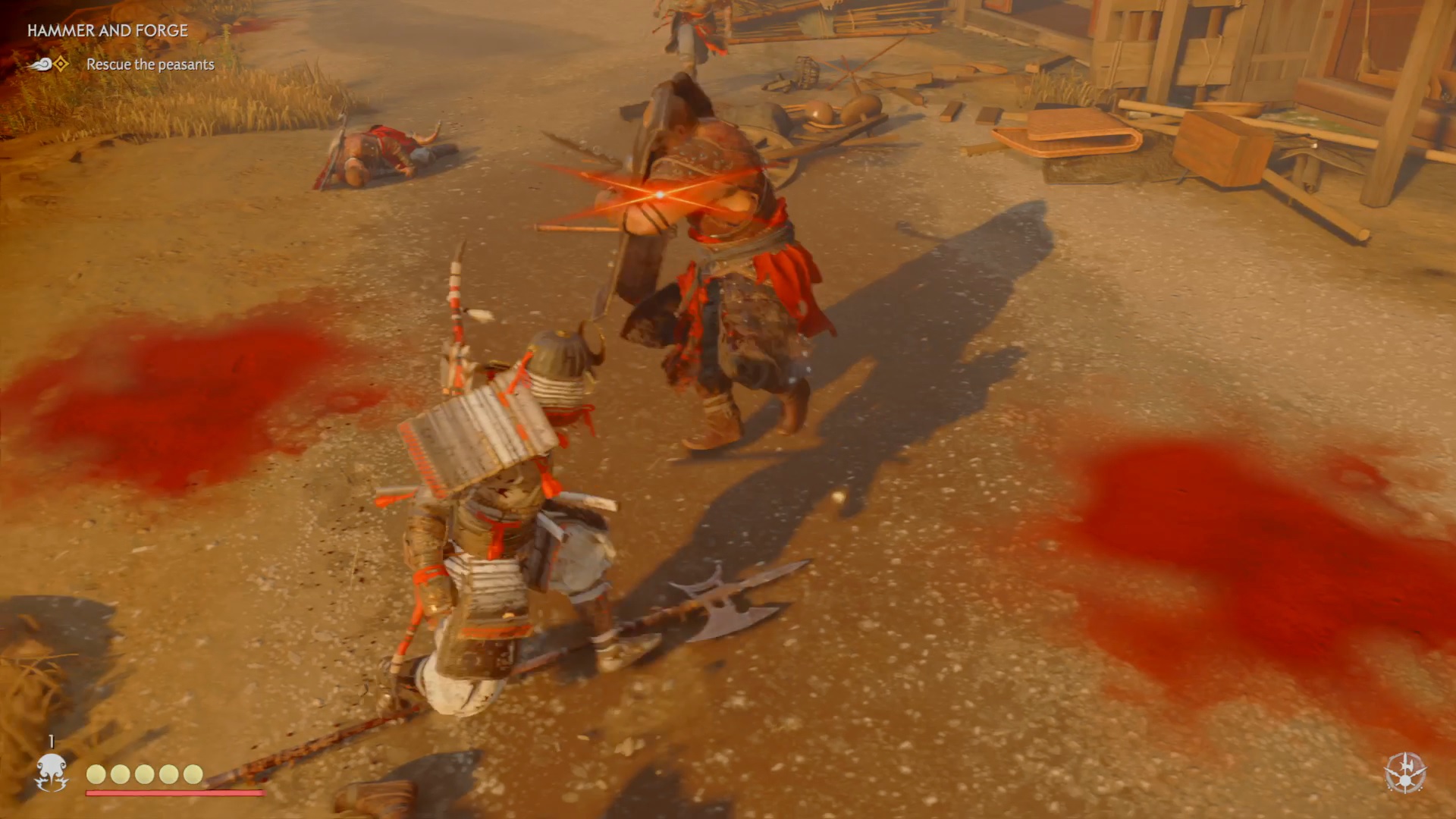
While most attacks can be parries and blocked (more if you unlock certain skills) there are some that you can never deflect. These are indicated by a red glow appearing as they start. When that happens dodging or rolling is the only option. It’s worth noting thought that the noise that goes with the red indicator actually starts playing a split second before it appears, so if you learn and react to that instead of the visual prompt you’ll actually get a bit more warning.
10. Always check the towns and hubs for conversations to open up new missions
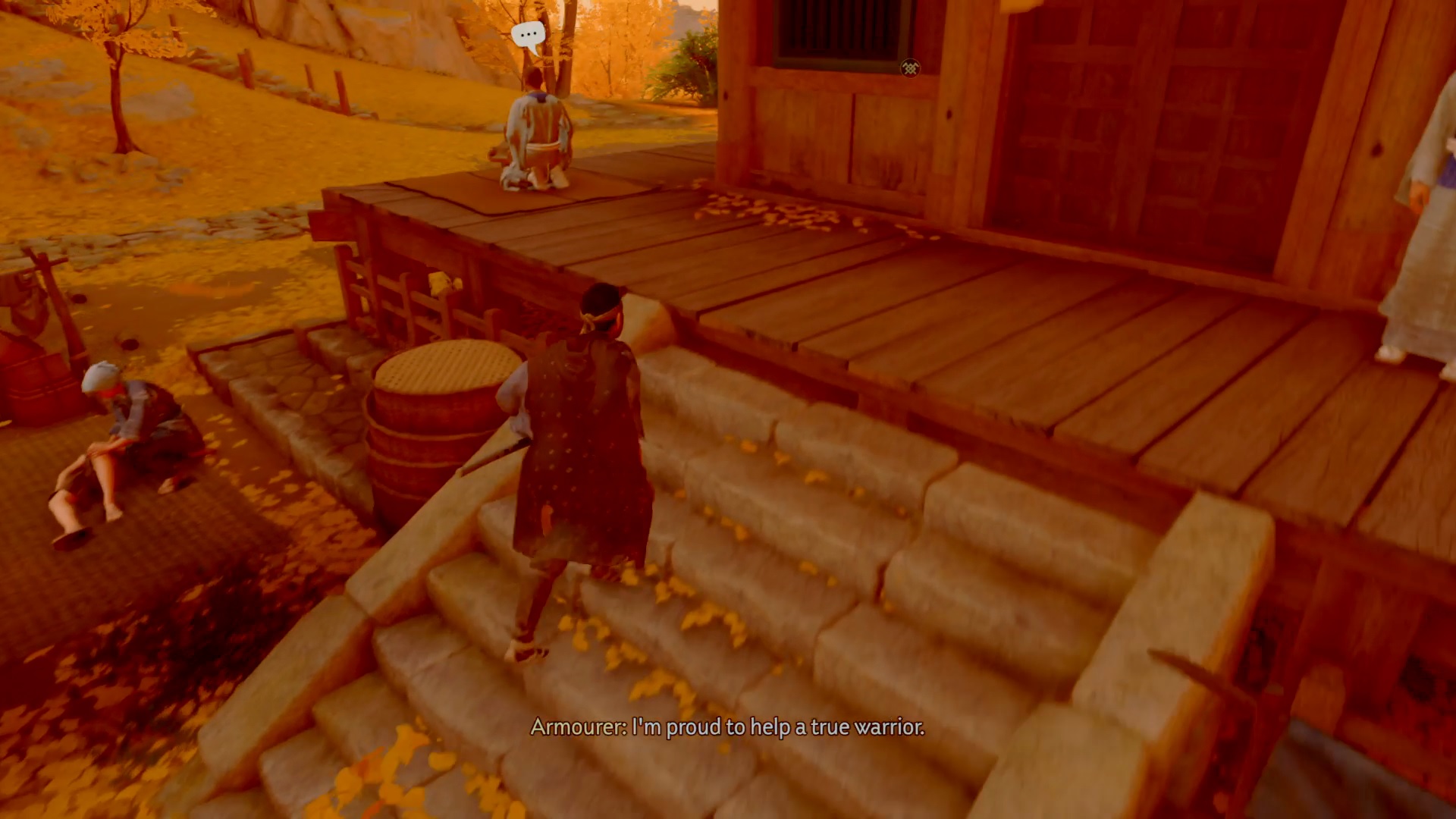
There are numerous Tales in Tsushima. These side missions unlock resources, XP, outfits and more. You’ll find some as you explore but a lot are discovered in towns and hubs by talking to anyone with a speech bubble hanging over them. These don’t always appear unless you get close, can occasionally be hidden in buildings or, because of the nonlinear nature of the game, might unlock in an area you haven’t returned to. So don’t forget to drop in and say hi to anyone with something to say.
11. Swap armor around based on what you need

There’s a lot of different armors in Tsushima, all of which come with different benefits like boosting health, damage, stealth, archery and so on. You can actually pause the game and swap between them at any time so use whichever you need when you need it - sneaky armor to slip into a camp, fighty armor when it all kicks off and so on. Because each option has such specific benefits you’ll get the best use by rigidly alternating as your needs change.
12. Sell other resources to get more supplies
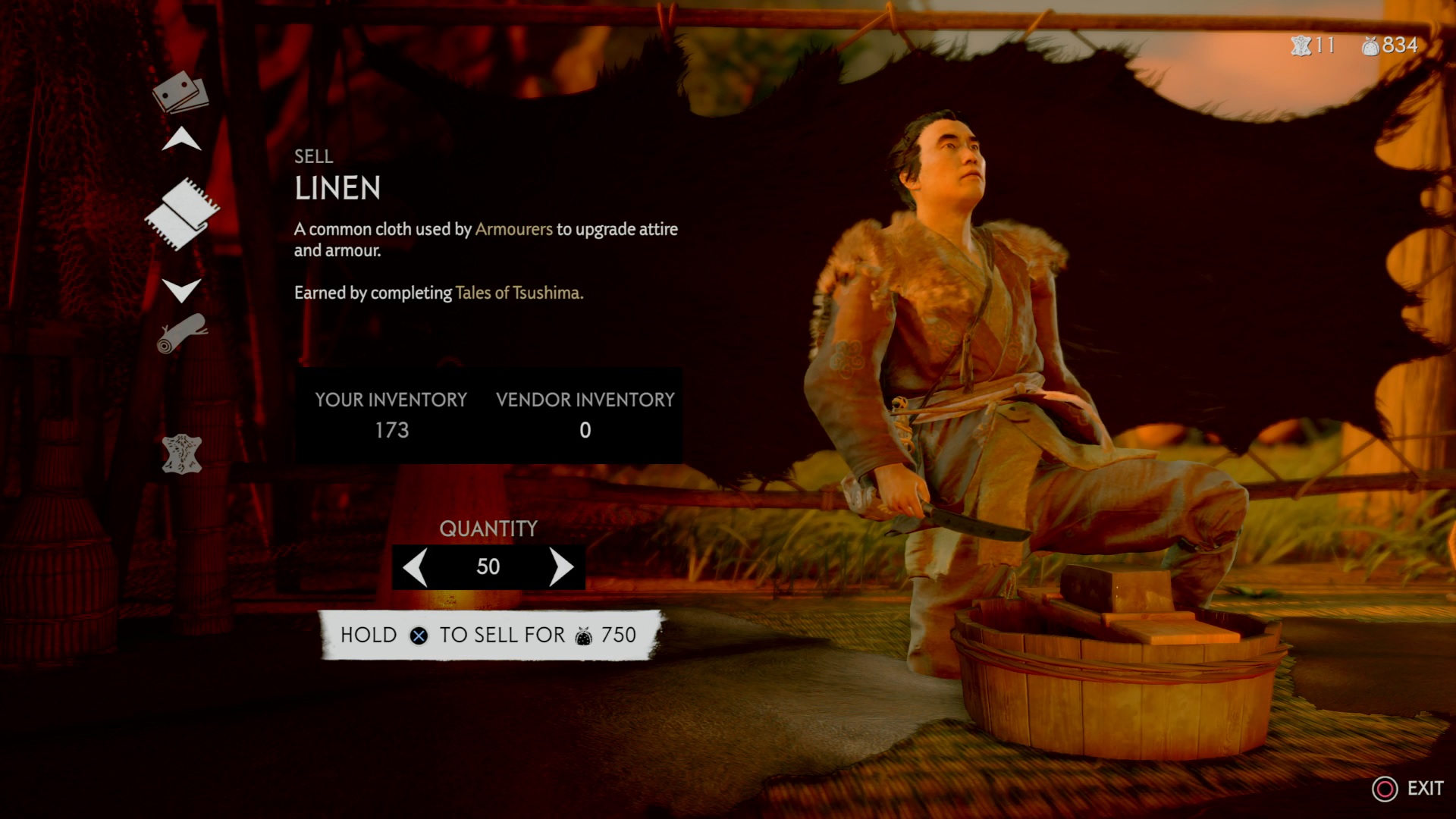
Supplies are basically money in Tsushima. These little bundles of… stuff, are what you trade with merchants for weapon and armor upgrades so always grab them when you can. You can find supplies all over the world from bases and villages to bodies and more. You’ll also usually find more on main missions but even if you don’t miss a thing you’ll still probably struggle to have enough for more than a few upgrades at a time. So sell any resources you don’t need - like wood and cloth - to the trapper and you should have more than enough.
13. Find Ishikawa the archer’s missions to get flaming arrows that can set Pampas Grass alight
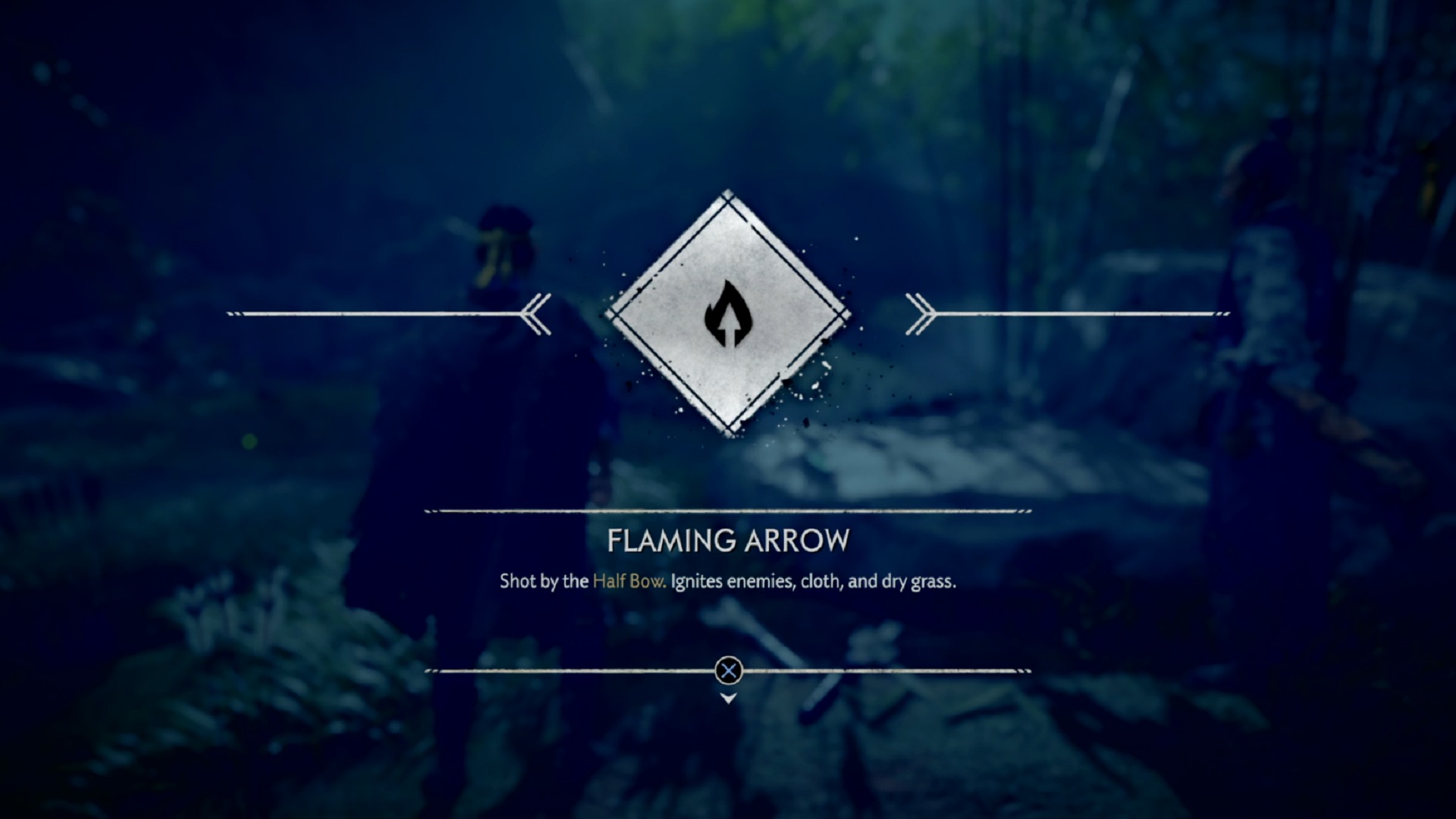
You’ll find plenty of side missions linked to characters that don’t really offer much beyond XP and resources. However, when you find Ishikawa the archer it’s worth getting to at least his fifth mission as you’ll unlock flaming arrows. These can set enemies alight, obviously, but will also ignite the white topped pampas grass you see in the world. That means one well targeted shot can devastate multiple enemies and leave little resistance for more close up and personal attack.
Ghost of Tsushima map | Ghost of Tsushima armor | Ghost of Tsushima skills | Ghost of Tsushima supplies | How to get the Ghost of Tsushima grappling hook | Ghost of Tsushima fox dens and inari shrines| Ghost of Tsushima bamboo strikes | Ghost of Tsushima hot springs | Ghost of Tsushima Torii Gates and Shinto Shrines | Ghost of Tsushima Komatsu Forge | Ghost of Tsushima duels | Ghost of Tsushima Charms
© GamesRadar+. Not to be reproduced without permission
Weekly digests, tales from the communities you love, and more

I'm GamesRadar's Managing Editor for guides, which means I run GamesRadar's guides and tips content. I also write reviews, previews and features, largely about horror, action adventure, FPS and open world games. I previously worked on Kotaku, and the Official PlayStation Magazine and website.


